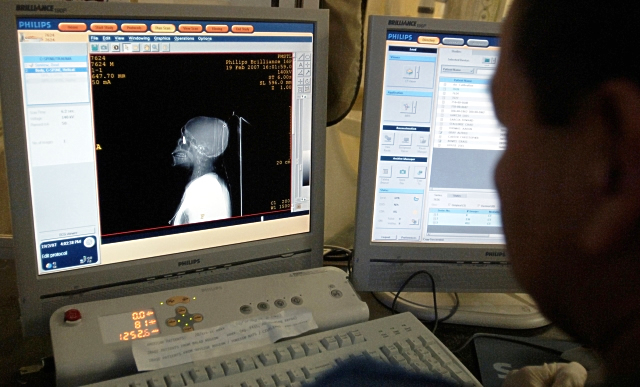Army, Navy Team Up to Tackle Enterprise Clinical Imaging Archive

The Army and Navy have joined forces to solve one the largest digital logistics problems the military has ever encountered ' storing a lifetime of medical images.
When the military transitioned from hard copy X-ray films to digital radiography less than 15 years ago, storage of patient medical images also changed. The standard for storing hard copy films was seven years. Digital radiology images, on the other hand, are stored for up to 90 years.
The project is called the Enterprise Clinical Imaging Archive (ECIA), a $35M joint Army/Navy effort to consolidate all of its separate long-term image archives into a vendor neutral archive system that shares information across the services. The project is being managed by the Navy and Army's picture archiving and communication system (PACS) teams, including the U.S. Army Medical Materiel Agency's Integrated Clinical Systems.
When it's complete, the ECIA will store up to five and a half petabytes worth of medical images in the integrated PACS. To put it into perspective, that is the data equivalent of more than 100 million four-drawer filing cabinets filled with text.
To date, Army Medicine has more than 24 million radiology studies in its PACS system, taking up 750 terabytes ' the data equivalent of 62 million phonebooks. But size isn't the only concern.
The ECIA will provide a cloud-based architecture to connect all Army and Navy medical treatment facilities and a clinical image viewer that will be accessible to all of their clinicians. The ECIA will serve as a vital component of the Department of Defense's Electronic Health Record solution to provide service-oriented access to medical imaging informatics from any requesting application.
"The move from traditional film to digital X-ray created many benefits for both clinicians and patients ' the biggest one being that images are immediately available to doctors anywhere on the hospital network. However, military patients don't spend their entire career receiving care from the same medical treatment facility. Service members move around and deploy. We needed an archive that could provide immediate access to patient medical imaging information, regardless of their location," explained Cory Martynski, a biomedical engineer at USAMMA, who is managing the ECIA project.
Currently, the Image Management Systems (IMS) are responsible for the central management of PACS throughout Army Medicine. The five regional medical commands are managed, upgraded, and replaced separately, with a lifecycle of about five years.
"The ECIA will allow us to centrally manage both Army and Navy long-term archives, streamline Information Assurance Accreditations, and eliminate the need for future enterprise data migrations," said Martynski, who has been at USAMMA since 2011.
When the ECIA is fully up and running, which is expected in 2017, the Army will be able to decommission 17 separate long-term archives and minimize the need for costly data migrations in the future. The last four data migrations took 75 months to complete and cost the government more than $3.1M.
Martynski added, "This isn't just a step forward; this is a jump forward."
USAMMA is a subordinate agency of the U.S. Army Medical Research and Materiel Command, which is the Army's main medical materiel developer. USAMMA's mission is to develop, tailor, deliver, and sustain medical materiel capabilities and data in order to build and enable health readiness.














